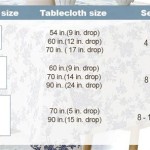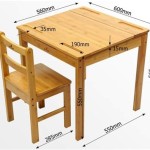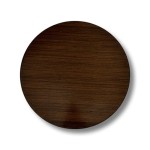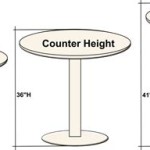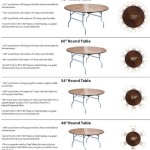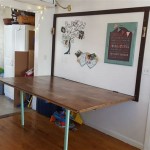Table Runner With Tassels: Enhancing Dining Decor
A table runner with tassels is a decorative textile designed to enhance the aesthetic appeal of a dining table, coffee table, or console table. It is typically a long, narrow piece of fabric that is placed lengthwise down the center of the table. The addition of tassels, which are decorative fringes or bundles of threads, at the ends of the runner contributes to its overall visual interest and textural detail. These runners serve both functional and decorative purposes, protecting the table surface from scratches and spills while also adding a layer of style and elegance to the dining environment. The versatility of table runners with tassels allows them to be incorporated into a variety of décor styles, from traditional to contemporary, and for both everyday use and special occasions.
The selection of a table runner with tassels necessitates careful consideration of several factors, including the dimensions of the table, the existing décor, the occasion for which the runner will be used, and the materials and construction of the runner itself. A well-chosen table runner can significantly elevate the presentation of a meal and create a more inviting and visually appealing dining space. This article will explore the various aspects of table runners with tassels, including their design, materials, uses, and care, to provide a comprehensive understanding of their role in home décor.
Understanding the Design and Aesthetics
The design of a table runner with tassels plays a crucial role in its overall impact on the dining space. The aesthetic qualities of the runner are determined by several factors, including the color, pattern, texture, and style of the fabric, as well as the design and placement of the tassels themselves. Understanding these elements is essential for selecting a runner that complements the existing décor and enhances the desired ambiance.
Color is a primary consideration in the design of a table runner. The color of the runner should harmonize with the color scheme of the dining room or the specific event for which it is being used. Neutral colors, such as beige, gray, or white, offer versatility and can blend seamlessly with a variety of décor styles. Bold colors, such as red, blue, or green, can add a pop of vibrancy and create a focal point on the table. The suitability of a color depends on the existing furniture, wall colors, and overall aesthetic of the room. For instance, a brightly colored runner might be well-suited for a modern dining room with minimalist décor, while a more muted tone would be appropriate for a traditionally styled dining room.
Patterns also contribute significantly to the visual appeal of a table runner. Patterns can range from simple geometric designs to intricate floral motifs and abstract compositions. The choice of pattern should be guided by the existing décor and the desired level of visual interest. A subtle pattern, such as a stripe or a small-scale print, can add a touch of sophistication without overwhelming the space. A more elaborate pattern, such as a damask or a paisley design, can create a more dramatic and opulent effect. The scale of the pattern should also be considered relative to the size of the table; a large-scale pattern may be too overwhelming for a small table, while a small-scale pattern may be lost on a large table.
Texture is an often-overlooked aspect of table runner design, but it can significantly impact the overall aesthetic. The texture of the fabric can add depth and dimension to the table setting, creating a more tactile and engaging experience. Smooth fabrics, such as satin or silk, can evoke a sense of elegance and formality, while textured fabrics, such as linen or burlap, can create a more rustic and casual feel. The interaction of light and shadow on the fabric's surface can also enhance its visual appeal. For example, a textured fabric may appear to have more depth and dimension under natural light than a smooth fabric.
The style of the table runner should also align with the overall décor style of the dining room. A traditional dining room might benefit from a runner with classic patterns, rich colors, and elegant tassels. A modern dining room might be better suited for a runner with clean lines, minimalist patterns, and simple tassels or no tassels at all. A rustic dining room might benefit from a runner with natural materials, such as burlap or linen, and simple, unadorned tassels. The style of the runner should complement the existing furniture, lighting, and accessories to create a cohesive and harmonious aesthetic.
The design and placement of the tassels themselves are also important considerations. The size, shape, and color of the tassels can significantly impact the overall appearance of the runner. Small, delicate tassels can add a subtle touch of elegance, while large, bold tassels can create a more dramatic effect. The color of the tassels should complement the color of the fabric, either by matching it exactly or by providing a contrasting accent. The placement of the tassels should also be carefully considered. They are typically placed at each end of the runner, but some designs may feature tassels along the sides as well. The length of the tassels should be proportionate to the size of the runner and the table.
Material Composition and Durability
The material composition of a table runner with tassels directly affects its durability, appearance, and care requirements. A wide variety of materials are used in the construction of table runners, each with its own unique properties and benefits. Selecting the appropriate material is essential for ensuring that the runner meets the specific needs and preferences of the user.
Cotton is a popular choice for table runners due to its affordability, versatility, and ease of care. Cotton runners are typically soft, absorbent, and machine washable, making them ideal for everyday use. However, cotton is prone to wrinkling and may require ironing to maintain a crisp appearance. Cotton is also relatively less resistant to stains compared to synthetic fibers, and colored cotton runners may fade over time with repeated washing. The quality of cotton can vary significantly depending on the grade and weave of the fabric. Higher-quality cotton runners will be more durable and resistant to wear and tear.
Linen is another natural fiber that is often used in the production of table runners. Linen is known for its durability, strength, and natural texture. Linen runners have a distinctive rustic appearance that is well-suited for casual dining settings. Linen is also highly absorbent and breathable, making it a comfortable choice for warm weather. However, linen is prone to wrinkling and may require ironing to maintain a smooth appearance. Linen is also relatively expensive compared to cotton and other synthetic fibers. The quality of linen can vary depending on the flax fibers used and the weaving process. High-quality linen runners will have a finer texture and a more luxurious feel.
Polyester is a synthetic fiber that is often used in table runners due to its durability, stain resistance, and affordability. Polyester runners are less prone to wrinkling and fading than natural fibers, and they are typically easy to care for. Polyester is also relatively resistant to stains, making it a practical choice for families with young children or for occasions where spills are likely to occur. However, polyester is less breathable than natural fibers and may not be as comfortable to use in warm weather. Polyester runners may also have a less luxurious feel compared to cotton or linen. The quality of polyester can vary depending on the manufacturing process and the type of fibers used. Higher-quality polyester runners will have a softer texture and a more natural appearance.
Blends of natural and synthetic fibers are also commonly used in table runners to combine the benefits of both types of materials. For example, a cotton-polyester blend can offer the softness and absorbency of cotton with the durability and stain resistance of polyester. These blends can provide a good balance of performance, affordability, and ease of care. The specific properties of a blend will depend on the ratio of natural and synthetic fibers. A blend with a higher percentage of natural fibers will have a more natural feel, while a blend with a higher percentage of synthetic fibers will be more durable and stain resistant.
The choice of material for the tassels is also an important consideration. Tassels can be made from a variety of materials, including cotton, silk, rayon, and synthetic fibers. The material of the tassels should complement the material of the runner and contribute to the overall aesthetic. Silk tassels are often used on formal table runners to add a touch of luxury, while cotton tassels are more commonly used on casual runners. The color and texture of the tassels should also be carefully considered to ensure that they harmonize with the fabric of the runner.
Usage and Care Instructions
Proper usage and care are essential for maintaining the appearance and extending the lifespan of a table runner with tassels. Following appropriate cleaning and storage guidelines can help prevent damage and ensure that the runner remains in good condition for years to come. Neglecting proper care can lead to fading, staining, or damage to the tassels, which can detract from the overall appearance of the runner.
Protecting the table runner from stains and spills is a primary concern. Using placemats and coasters can help prevent food and liquid from coming into direct contact with the runner. Promptly cleaning up any spills that do occur is essential for preventing stains from setting in. Blotting the spill with a clean, absorbent cloth is the best way to remove the liquid without spreading it. Avoid rubbing the spill, as this can push the liquid deeper into the fabric and make the stain more difficult to remove.
Washing instructions will vary depending on the material of the table runner. Cotton and polyester runners are typically machine washable, while linen and silk runners may require hand washing or dry cleaning. Always check the care label on the runner before washing it. Use a mild detergent and avoid using bleach, as bleach can damage the fibers and cause fading. When machine washing, use a gentle cycle and cool water. Tumble dry on low heat or hang to dry. Ironing may be necessary to remove wrinkles. Use the appropriate heat setting for the fabric, and avoid ironing directly over the tassels.
For runners that require hand washing, use a mild detergent and cool water. Gently agitate the runner in the water and then rinse thoroughly. Avoid wringing or twisting the runner, as this can damage the fibers. Gently squeeze out the excess water and then hang to dry. Ironing may be necessary to remove wrinkles. Use the appropriate heat setting for the fabric, and avoid ironing directly over the tassels.
Dry cleaning is recommended for delicate fabrics, such as silk or velvet. Dry cleaning can help preserve the color and texture of the fabric and prevent damage. Always take the runner to a reputable dry cleaner who has experience cleaning delicate fabrics. Be sure to inform the dry cleaner of any specific care instructions for the runner.
Proper storage is also essential for maintaining the appearance of a table runner with tassels. When not in use, store the runner in a cool, dry place away from direct sunlight. Sunlight can cause fading and damage to the fibers. Fold the runner neatly and store it in a drawer or on a shelf. Avoid storing the runner in a plastic bag, as this can trap moisture and lead to mildew. Consider using a fabric storage bag or a cedar chest to protect the runner from moths and other pests.
To maintain the appearance of the tassels, gently comb them with a soft brush or comb to remove any tangles or knots. If the tassels become frayed, trim the loose threads with scissors. Avoid pulling on the tassels, as this can damage them. If the tassels become stained, try spot cleaning them with a mild detergent and water. Gently blot the stain with a clean cloth and then rinse with water. Allow the tassels to air dry.

Tassel Table Runner Your Favorite In Every Season Lemon Drops Lilies

Handwoven Cotton Table Runner With Tassels

Gold Patterned Table Runner With Tassels Oriental Trading

Diy Burlap Table Runner With Tassels On Sutton Place

Ivory Textured Table Runner With Tassels 14x72

Empress Table Runner Luxury With Tassels For Decoration Light Gray 13x72 90 108 120 Finland

Cotton Linen Elegant Tassel Short Natural Modern 48 Inch Table Runner

Diy Burlap Table Runner With Tassels On Sutton Place

Boho Table Runner Tassels Rustic Home Wedding Temu

Luxury Velvet Table Runner Shiny Silver Fl Tassels Cloth Decor Retro


